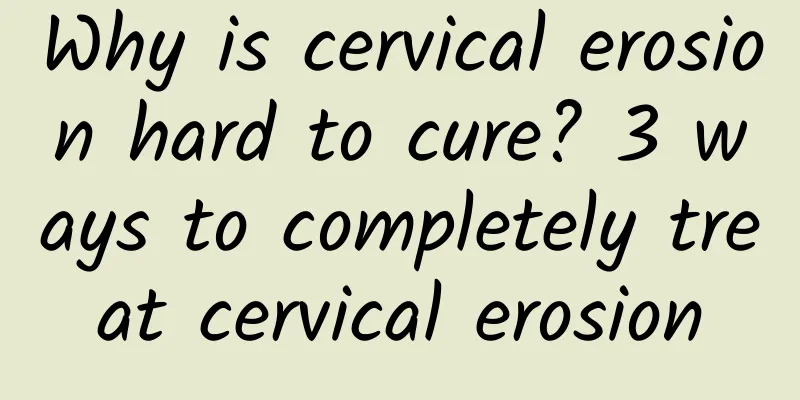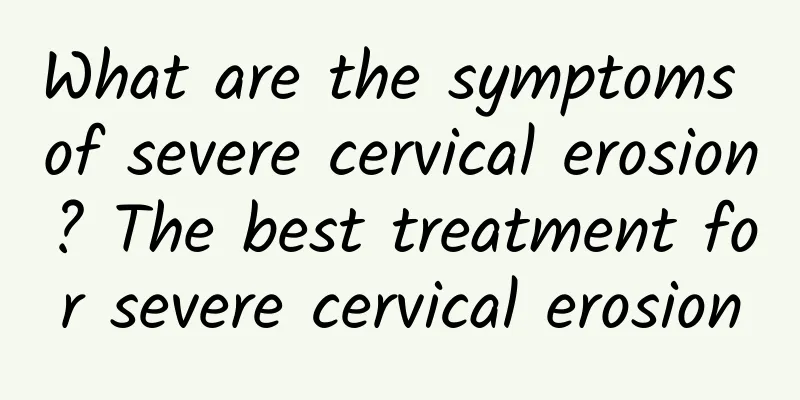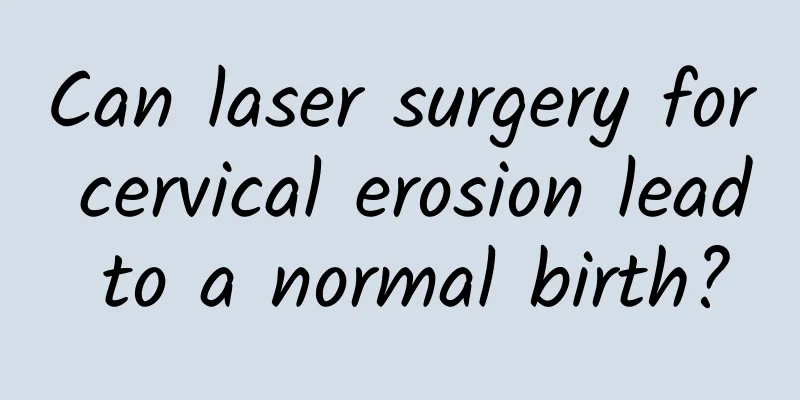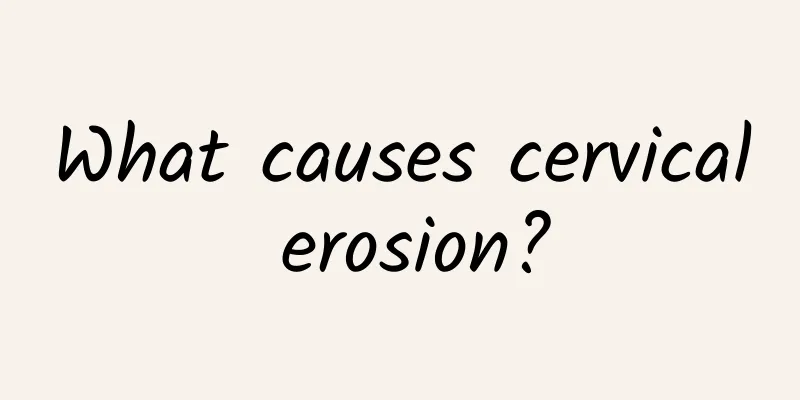Why is cervical erosion hard to cure? 3 ways to completely treat cervical erosion

|
Cervical erosion is now very common. Many women cannot easily cure this disease. The repeated occurrence of cervical erosion has caused great harm to many women's body and mind. So, why is cervical erosion not easy to cure? 1. Why is cervical erosion difficult to heal? During the healing process, the newly formed squamous epithelium is often scattered in flakes or runs in strips on the eroded surface. Because this type of newly formed squamous epithelium grows on tissues with inflammatory changes, it is very easy to fall off. Once stimulated, erosion will reappear. This repeated repair and shedding is the reason why erosion is difficult to heal. The healing process of cervical erosion is generally divided into two forms. One is that the squamous epithelium near the erosion surface grows under the columnar epithelium covering the erosion surface, gradually pushing the columnar epithelium, and finally completely replacing the columnar epithelium to cover the entire erosion surface. This is the form of direct coverage by the squamous epithelium; the other form is indirect replacement. Under normal circumstances, there are relatively few round cells under the columnar epithelium, called reserve cells. These cells have certain proliferation and differentiation capabilities. These reserve cells continue to proliferate and differentiate into squamous epithelial cells, replacing columnar epithelial cells to cover the entire erosion surface, so that the erosion surface is covered with squamous epithelium again and heals. During the healing process, the new squamous epithelium is often scattered in sheets or runs in the erosion surface in strips. Because this type of new squamous epithelium grows on tissues with inflammatory changes, it is very easy to fall off. Once stimulated, erosion reappears. The repeated occurrence of this kind of repair and shedding is the reason why erosion is not easy to heal. 2. Methods for complete treatment of cervical erosion 1. Physical therapy: The principle of physical therapy is to cover the cervical erosion surface with a single layer of columnar epithelium by various physical methods, but regular follow-up is required after treatment. Physical therapy can also cause postoperative bleeding, infertility, cervical stenosis, infection and other problems. 2. Laser treatment: When laser therapy was first used in clinical practice, it was favored by many patients because they thought it would not cause bleeding and was painless. The laser directly acts on the lesion, and the high temperature generated dehydrates, vaporizes, and even carbonizes the diseased tissue and causes it to fall off. 3. Cryotherapy: The principle of this technology is very simple. The probe is inserted into the vagina, directly reaching the cervix, and then liquid nitrogen is released to sharply reduce the temperature of the lesion. The diseased tissue cells are frozen under the effect of low temperature, and then necrosis and shedding occur. The new healthy tissue covers the original lesion, and the disease is cured. |
>>: Can female cervical erosion be cured? What are the best treatments for cervical erosion?
Recommend
Early treatment of cervical precancerous lesions
Generally speaking, the earlier cancer is discove...
What to do if you have ovarian cysts during pregnancy
Gynecological diseases have a great impact on wom...
Eat French fries as a meal! 30% of school children have red flags when eating out
Children's Day is approaching, and a survey f...
What is hydatidiform mole surgery called?
The surgery for hydatidiform mole is generally ca...
What impact does uterine malformation have on fertility?
The uterus plays an extremely important role in r...
What are the symptoms of cervicitis
Cervicitis is one of the common gynecological dis...
Understand the types of pelvic inflammatory disease and fight for your health
Pelvic inflammatory disease is a common gynecolog...
What should I do if my period is delayed for two consecutive months?
What should I do if my period is delayed for two ...
What are the symptoms of postpartum uterine prolapse
What are the symptoms of postpartum uterine prola...
Are suppositories useful for women with cervical erosion? A guide to the treatment of cervical erosion in women
Cervical erosion is a common gynecological diseas...
The causes of uterine adnexitis are generally the following:
Uterine adnexitis is a common type of adnexitis. ...
Get rid of edema-type obesity! Drink wax apple fresh orange juice
[Edema] Main fruits and vegetables for edema: wat...
4 ways to detect ovarian cysts
Ovarian cyst refers to the formation of tumors in...
How to relieve menstrual pain and stomach pain
How to relieve menstrual pain and stomach pain? M...
How to diagnose adenomyosis
How to diagnose adenomyosis? 1. Ultrasound examin...









